You’re cuddled up on the couch with your beloved pup, enjoying some quality snuggle time.
But as you run your fingers through his fur, you suddenly feel a small bump. Upon closer inspection, you discover it’s a dried dead tick on your German Shepherd. Yikes! Don’t panic, though.
Dealing with ticks on your GSD can be a pesky problem, but with knowledge, the right tools and techniques, you can easily remove them and prevent future infestations.
In this guide, we’ll cover everything you need to know about dried dead ticks on your German Shepherd, as well as getting rid of them, and successfully preventing them!
Dog Ticks 101
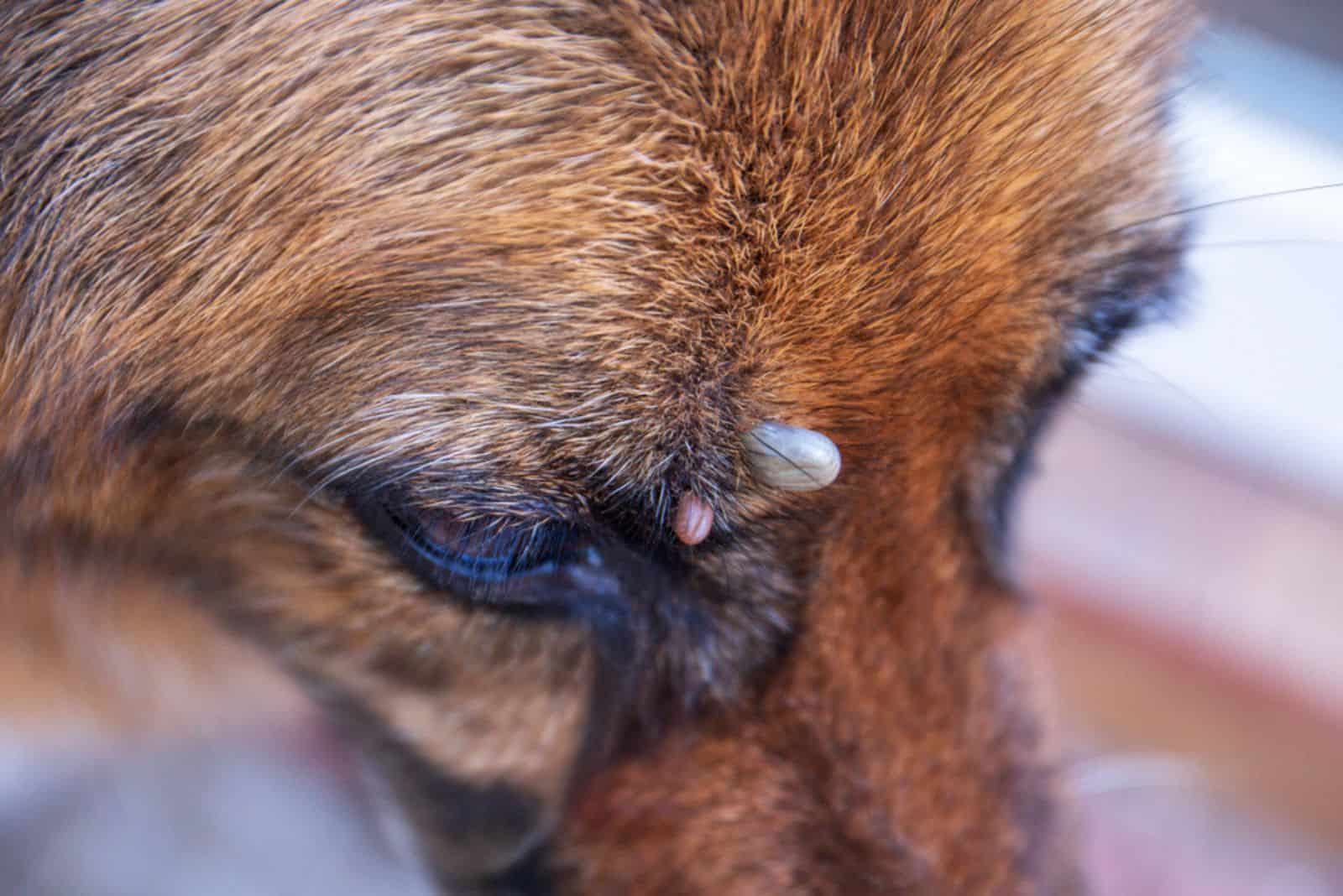
Dog ticks are basically tiny, blood-sucking vampires that attach themselves to your German Shepherd’s skin and feed on his blood. Gross, right?
But here’s the thing: ticks can also transmit diseases to your dog, like Lyme disease or Rocky Mountain spotted fever. That’s why it’s very important to keep these pests at bay.
Unlike other canine parasites that live inside the dog, ticks are external parasites that often go unnoticed – especially when they are attached to pups with thick coats, such as German Shepherds.
Dog ticks go through four different life stages; they start out as tiny eggs, then hatch into larvae, then molt into nymphs, and finally become adult ticks.
Here’s where things get hairy (or furry, rather) – it’s in these last three stages that ticks can latch onto your pup and start feasting on their blood.
So, you’ve spotted a dried dead tick on your GSD or you suspect they might have. What now?
Don’t worry! We’ll show you how to safely and effectively deal with these pesky parasites, so you can get back to enjoying some quality time with your pup!
What You’ll Need For Tick Removal
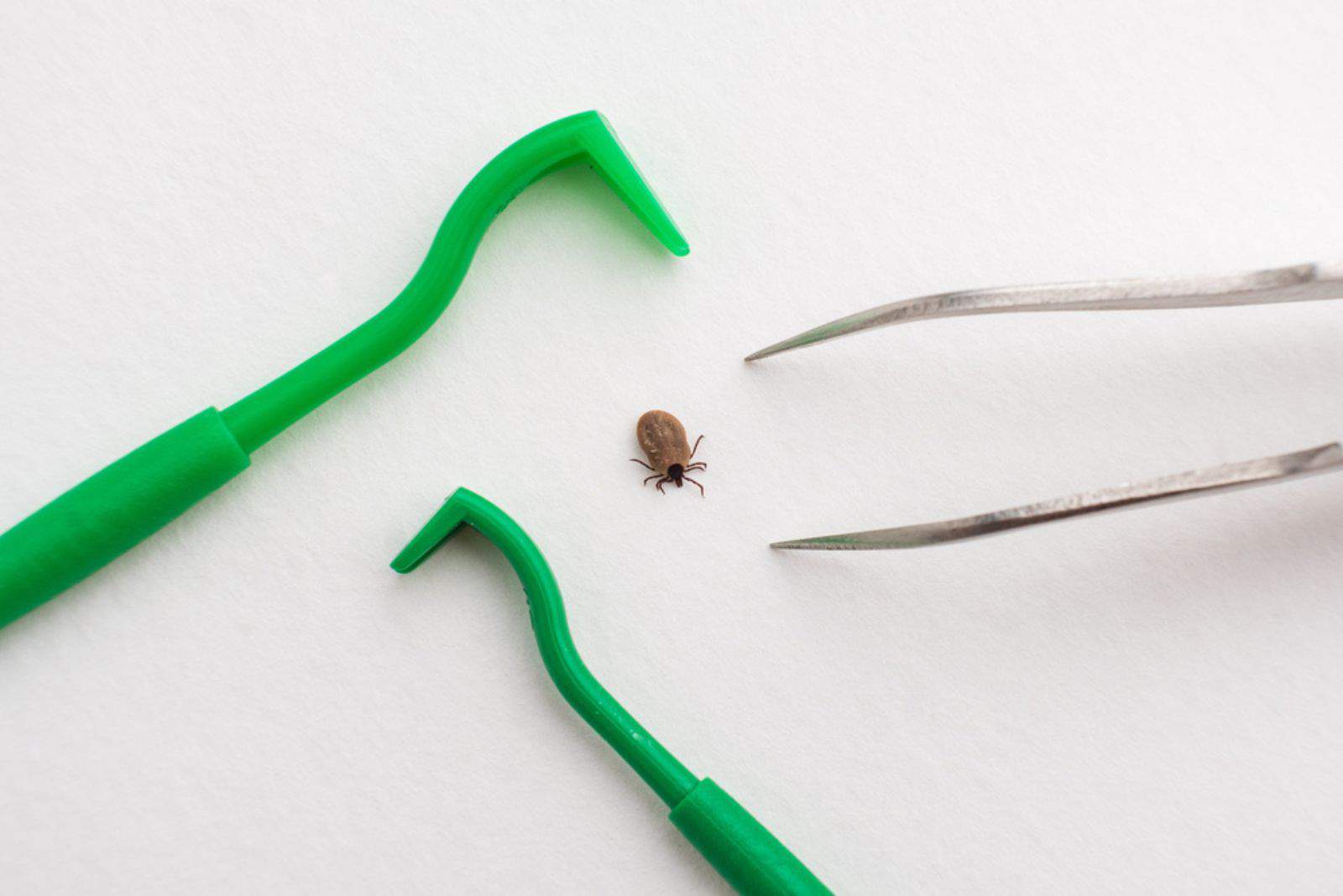
If you’re a proud owner of a German Shepherd, then you’re likely familiar with the challenge of dealing with ticks. These pesky parasites are all too common in GSDs, but fear not!
Dog ticks are no match for a prepared pup parent!
Here’s what you’ll need:
- A calm German Shepherd dog
- A pair of fine-tipped tweezers
- Rubbing alcohol or antiseptic solution
- Disposable gloves
- A sealable container or paper tissue for the tick
- A steady hand and a calm demeanor
Now that you have all the necessary tools to remove a tick from your GSD, let’s dive into our step-by-step guide to removing dried dead tick from your pup!
7 Steps To Safely Remove A Dried Dead Tick From Your GSD
Don’t let a dried dead tick on your German Shepherd make you sick, act quick and give that tick the flick!
Grab your gloves, put on your superhero cape, and let’s get started on our tick-removing mission!
1. Gather Your Supplies

Before you begin, make sure you have all that we’ve just listed on hand. Let’s call this your own tick-removal toolkit!
Life’s easier when you don’t have to get up to grab a forgotten tool during tick removal. Plus, your GSD probably won’t appreciate the sudden movement.
That’s why it’s important to gather all your supplies beforehand.
2. Keep Calm And Carry On

When it comes to tick removal, staying cool, calm, and collected is the name of the game. We know it’s easier said than done when you have a creepy-crawly tick on your beloved GSD.
But remember, your pup is looking to you for guidance, and if you’re freaking out, he will too. After all, you don’t want to make your German Shepherd anxious!
3. Parting The Fur
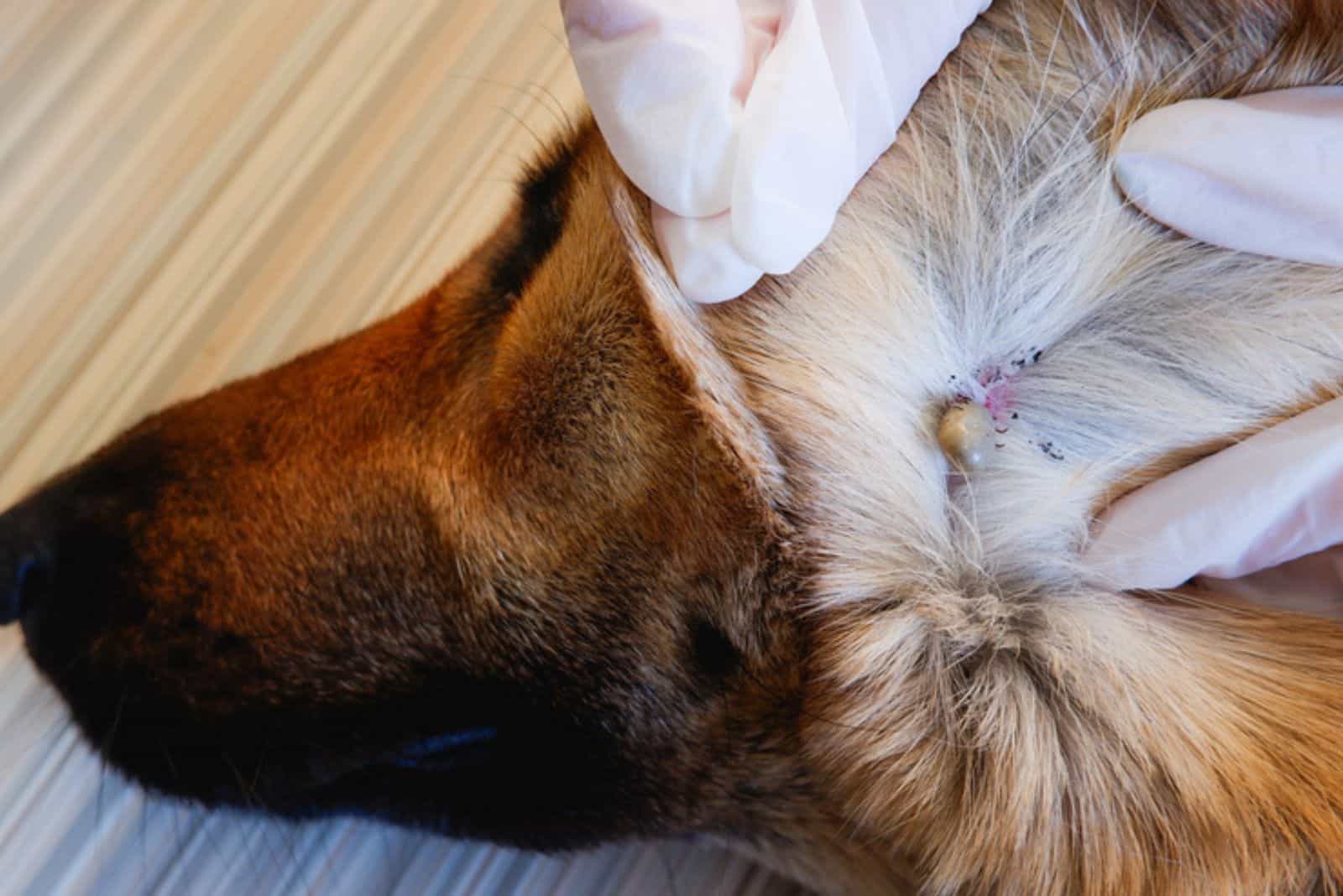
Okay, time to put your detective hat on and locate that pesky tick.
Start by parting your dog’s fur around the tick and locate the little sucker’s head, which is usually buried deep in the skin.
While you’re at it, don’t forget to shower your pup with praise and treats for being a patient and cooperative sidekick in your tick-removing mission.
4. Tweeze With Ease

It’s time to whip out those tweezers and get to work! As long as they are clean and functional, you can use the tweezers you have at home. But, you can also purchase special tick-removing tweezers.
Position the tweezers as close to your German Shepherds skin as possible, and grip the tick firmly.
Then, with a steady hand, pull the tick straight out, making sure to remove the entire tick, including the head. And voila! You’ve successfully removed the tick like a champ.
Don’t worry too much if you accidentally leave the tick’s head behind. While it’s important to remove as much of the tick as possible, sometimes the head can be tricky to extract.
If the head stays embedded in the skin, it will usually form a tick scab, which will fall off on its own after a few days. Infections can occur, but they’re relatively rare.
5. Clean And Clear
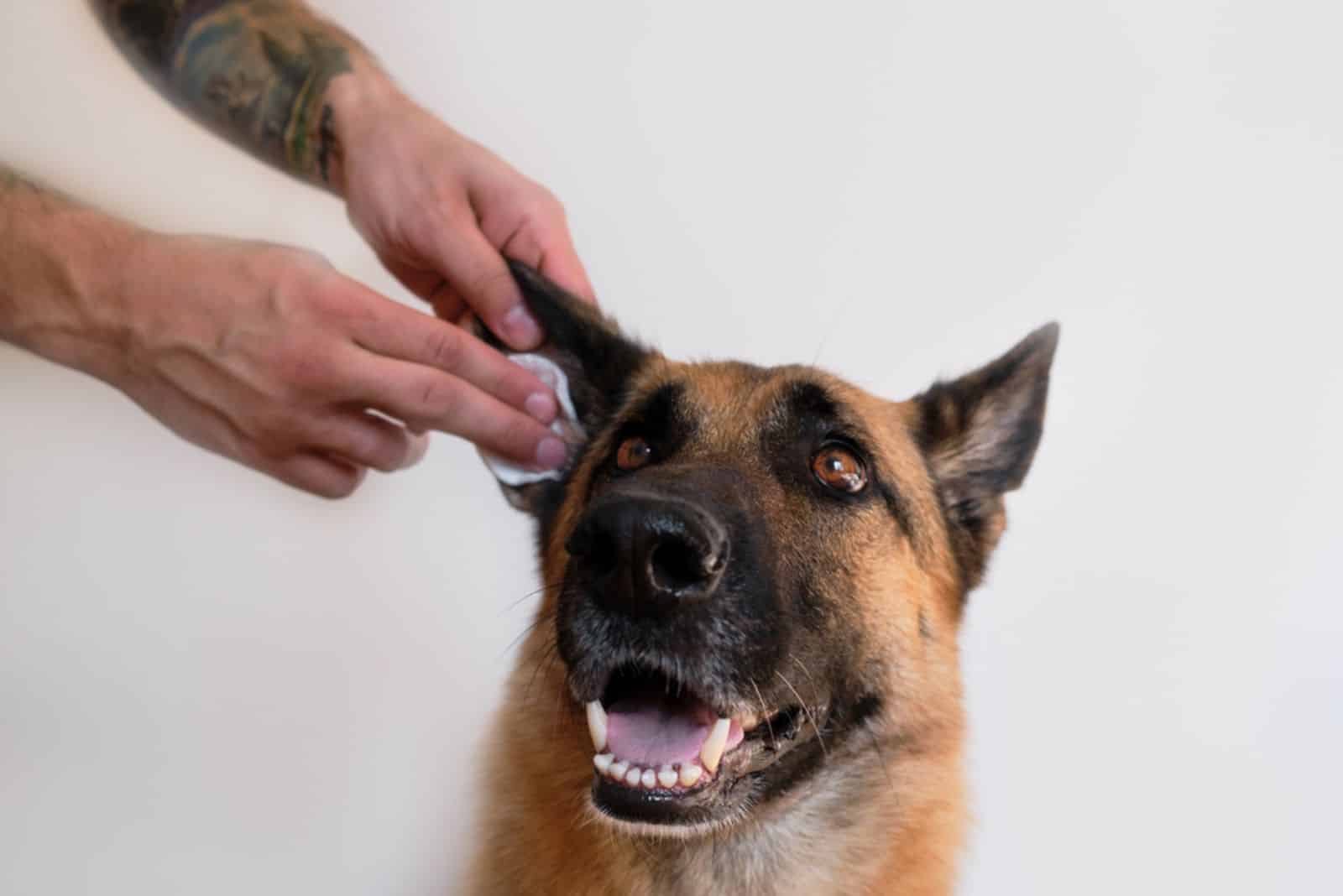
After you’ve successfully evicted the tick from your GSD, it’s time to give the area a good clean-up.
Grab some rubbing alcohol or antiseptic solution and gently clean the area around the bite. This will help prevent any infections from developing and give your itchy pup some relief.
6. Love And Treats
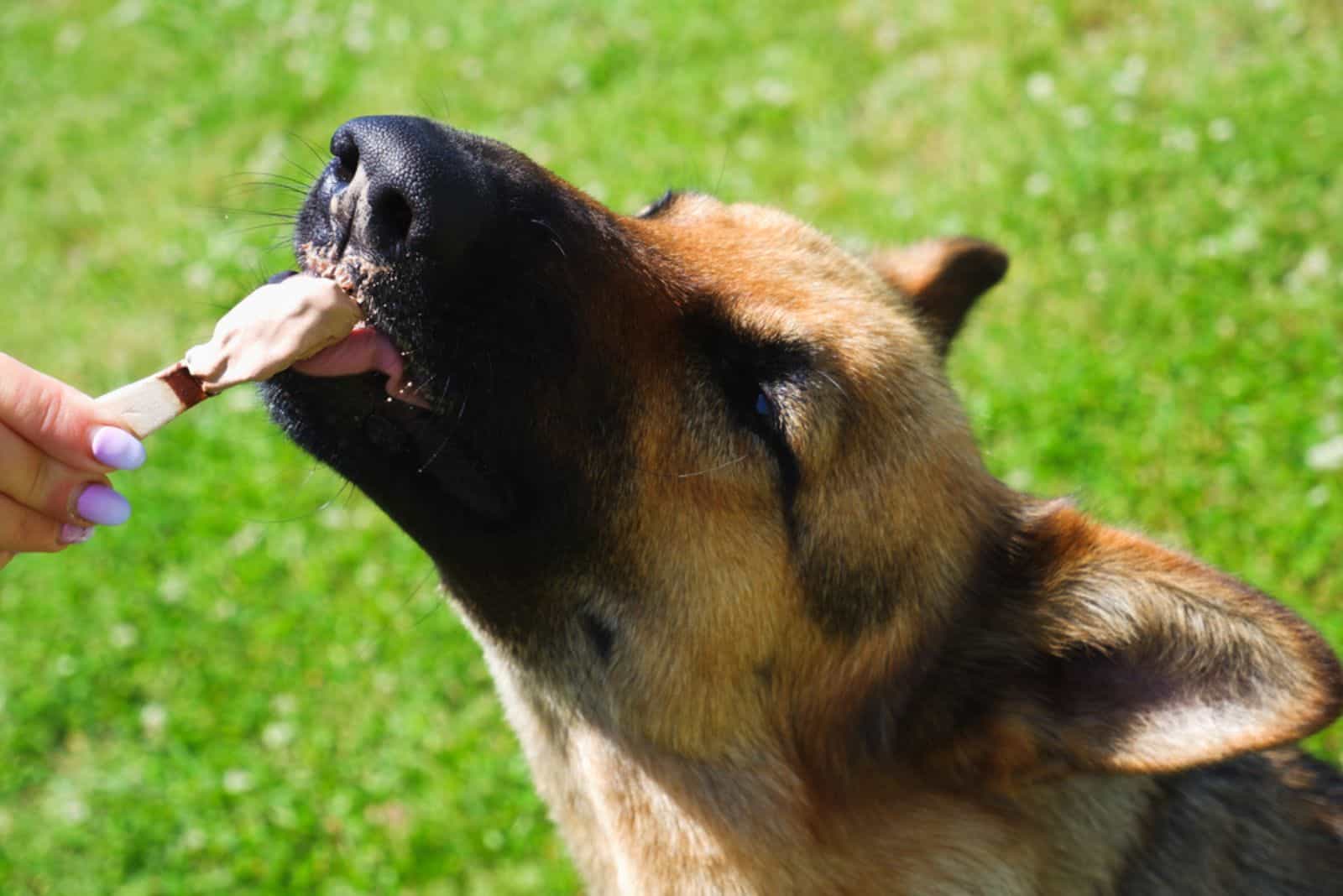
Removing a tick can be a stressful experience for your German Shepherd, so it’s important to show him some extra love and care afterward.
Give him a few extra cuddles, scratches, and treats to let him know how proud you are of him for being such a trooper during the tick removal process!
7. Celebrate And Share Your Success
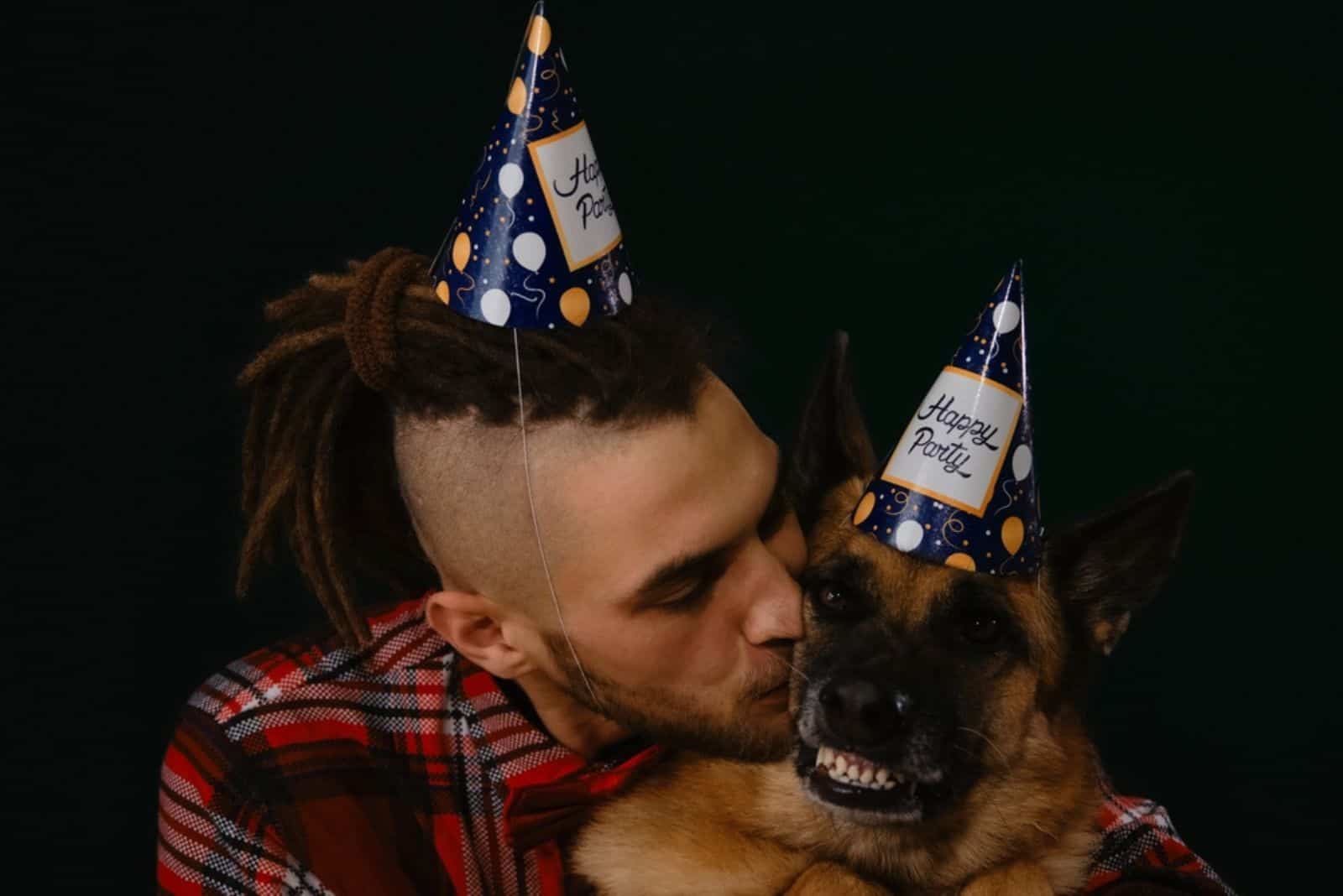
GIve yourself and your GSD a high-five, a belly rub, or a special treat to celebrate your victory over the pesky tick. You both deserve it!
And don’t forget to share your success story with other GSD owners to spread the knowledge and help keep all our fluffy companions tick-free.
Risks And Challenges Of Dead Ticks On German Shepherds
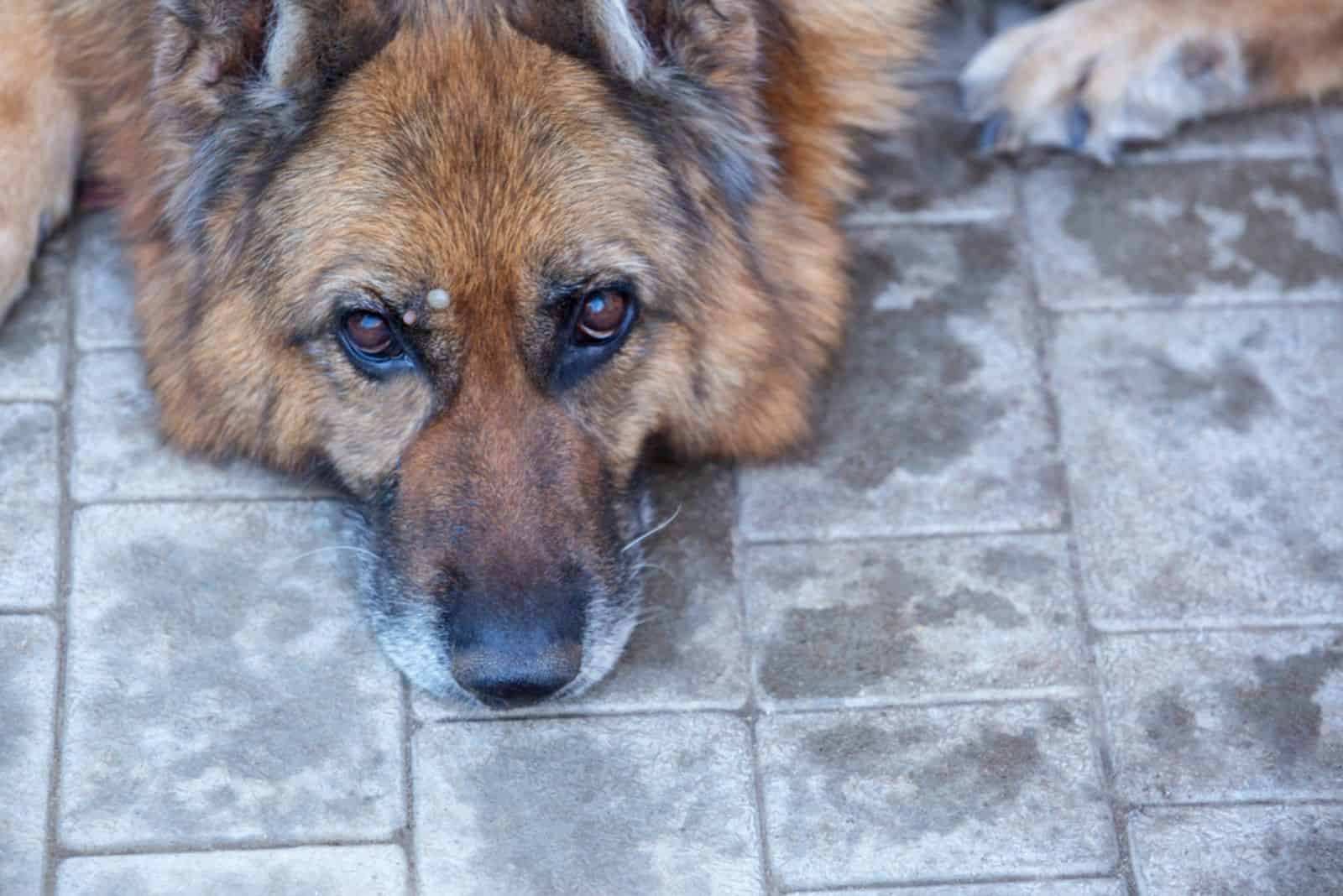
Dried dead ticks on German Shepherds may seem harmless, but they can still pose some risks and challenges. Even though the tick is no longer attached, its remains can still cause irritation and discomfort for your furry friend. But that is the last thing you should worry about.
If the tick was carrying any diseases, those can still be transmitted even after the tick is dead. However, not all dogs who are bitten by ticks will develop symptoms.
It is important to be aware of some potentially deadly tick-borne diseases that can affect German Shepherds:
- Lyme Disease
- Ehrlichiosis
- Anaplasmosis
- Rocky Mountain Spotted Fever
- Babesiosis
These diseases can cause a range of symptoms including:
- Lethargy
- Fever
- Joint pain
- Drooling
- Nausea
- Vomiting
- Diarrhea
Removing dead ticks can be a bit trickier than removing live ones, since they may be more difficult to see and may have dried up or become stuck to your dog’s fur.
Remember to take your time and be gentle when removing them to avoid any unnecessary pain or discomfort for your pup.
Prevention Is The Best Intervention
Prevention is the name of the game when it comes to tick-borne illnesses.
One popular option is to use spot-on treatments, which work like a force field for your dog’s skin, repelling ticks and other pesky critters. These treatments are also efficient against some internal parasites like roundworms.
Just make sure to follow the instructions closely and use products designed specifically for dogs – we don’t want any DIY disasters!
Regular grooming and tick checks after outdoor adventures are also great ways to act on time. And if you’re feeling fancy, you can even try tick-repellent sprays or collars.
It is important to consult with your vet before trying any new tick prevention methods or products, especially if your GSD has any pre-existing health conditions or allergies!
Final Thoughts
We hope this guide has been helpful in teaching you how to safely remove a dried dead tick from your German Shepherd.
Remember, tick prevention is key, so be sure to take steps to protect your furry friend from these pesky parasites.
And if you do find a tick on your GSD, don’t panic! Keep your German Shepherd slick, and prevent those ticks!















